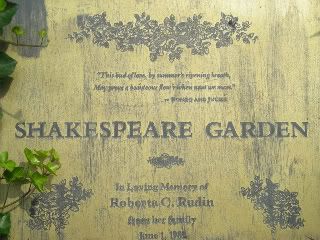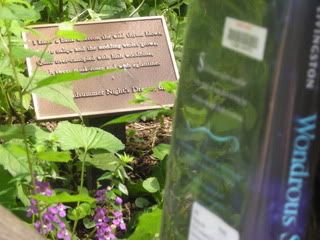The internet has been all a-twitter this week after it was revealed (rather surreptitiously, apparently) that the director of YALSA has
proposed eliminating the Best Books for Young Adults list (link leads to a .pdf file). In its place, according to
Liz B is a
Best of "Reader's Choice" list (again, link leads to a .pdf file). I have to take her word for it, since I don't get YALSA stuff all formally in a way that would make the connection obvious, but it certainly sounds like this Reader's Choice list is intended in some way to supplant BBYA.
To make it short, I believe this would absolutely be a
bad idea.
But let me elaborate.
As I mentioned over at
Bookends, being able to be part of BBYA in some small way was seriously one of the highlights of high school, if not my life, and is definitely what inspired me to pursue a career in literature.
I first heard about BBYA about half way through my junior year of high school. The school librarian told me that Mrs. Dobrez was starting some book club for young adult books and thought that I should be a part. I really don't think I knew much more about it before I decided to join. I knew there were going to be lots of books, other people that liked books, and Mrs. Dobrez and Mrs. Rutan, my middle school librarians who I sorely missed at the high school level.
Participating in the "club" was an exhilarating experience for a young geek like me. Mrs. Dobrez was on the BBYA committee, which meant she was being sent new and upcoming books by the box load. To help gauge interest in the books and to share the wealth, she and Mrs. Rutan started the BBYA reader's group where students from 6th through 12th grade (and eventually higher - even once we'd graduated high school several of us found ways to keep coming back!) could grab new books and eventually share our opinions on them with other readers and, perhaps most excitingly, have our opinions heard by the BBYA committee at the ALA conferences. Mostly these opinions were relayed by Mrs. Dobrez or Mrs. Rutan via the feedback cards we diligently filled out for all the books we read (ironic: I couldn't be bothered to keep track of what I was reading back when I was doing summer reading clubs through the local library, but give me the chance at my opinions on books reaching a national audience and suddenly I became extremely meticulous!). But on a few rare occasions, we students got to make the trek to the ALA summer conference and share our opinions directly with the BBYA committee.
I got to go to ALA twice - first I made my poor mom drive me all the way down to Atlanta so I could not only share my opinions on the panel, but meet
Sara Ryan, whose book
Empress of the World pretty literally changed my life (I read it seven times in the week I borrowed it from BBYA and I will still re-read it eagerly. I also used it for pretty much any college project for a couple of years that could be manipulated to be about a YA book). I felt like such a star-struck fangirl. First I nearly passed out when Mrs. Dobrez introduced me to Sara Ryan, and then I distinctly remember walking around the conference hall with Mrs. Dobrez and Mrs. Rutan. They paused for a moment to talk to some people they knew and I remember glancing at the nametag of one woman to discover it was E.R. Frank. I felt like I was in Hollywood or something, rubbing elbows with all of these famous people!
Attending that first ALA conference was the first time, I think, that I realized that librarians actually do stuff outside of the library. It's not all checking out books, giving endless booktalks, and shushing rowdy kids (although, as I learned from the internship I did my senior year with Mrs. Dobrez and Mrs. Rutan, there is plenty of that!). Librarians not only get all the cool books and meet the cool people, but can really play a part in getting obscure books into the hands of people who need them (
Alex Flinn explains this from an author's perspective here).
Actually contributing to the BBYA panel was a real trip, lol. The teen presentation day fell on father's day, which meant pretty much all of the local teens dropped out at the last minute. They'd managed to rope in a random group of kids who were attending the conference, I believe, to see the Printz winners. Which meant they were a well read bunch of kids, but they'd all read the same books. Meanwhile, I had been systematically plowing through as many of the nominated titles as I could. I think on the handout they gave us of all the nominated titles there were ten titles per page, and I regularly found that I had read 6-9 of the titles on every page. I felt so self-conscious after it quickly became clear that I had easily out-read all of the other kids there that I made myself pick only one book per page that I felt really strongly about. Usually strongly positive - Mrs. Dobrez remembered that I'd had a very negative reaction to
Three Clams and an Oyster and made me share my opinions with the whole group, lol. It was a heady experience, and one I'll absolutely never forget.
A few years later I got to go back to ALA when it was in Chicago (much shorter road trip this time!). I was officially "too old" to be a teen reader, but the current crop of BBYA readers was going and I
was old enough to be considered a chaperon. So one sunny summer day I climbed on a bus with a bunch of middle and high school kids to play grown up while they shared their opinions with the BBYA panel. The kids ran the gamut of "young adult," from middle to high school. Most of the high school kids had been middle schoolers when we started BBYA, and most of us could hardly string together a more coherent sentence than "I really liked this book. It was cool and exciting. I liked the main character" when sharing with each other at our weekly meetings. So it was great to go into the teen BBYA panel and see these kids be able to give concise and
precise reviews of exactly why any particular book should or should not be part of the final BBYA list. Even the younger kids held their own - undoubtedly they had learned by the example of the older members.
From the comments over at Bookends, it's obvious that a lot of people feel passionately about the BBYA list. Teachers and librarians alike use the list to decide what books should be added to their school libraries. They use it to justify adding books to the curriculum. BBYA doesn't rely strictly on popularity, which means that obscure books or controversial books have just as much of a chance of being recognized as heavy weights like
Harry Potter. But for me, BBYA has touched me on a much more personal level. I hope to one day be one of those librarians who relies on BBYA - or maybe even be one of those who gets to vote on the list. Or maybe I'll be an editor at a small publisher, who finds that a little gem of a book has a chance at wider recognition because the BBYA committee is considering it at a conference. I don't know where exactly I will end up, but I know I will end up there in no small part because of what I learned as a teen reader for BBYA.
Update: YALSA board member Michele Gorman tries to calm things down over
here, clarifying that this is only a proposal at this point, and saying that the Reader's Choice list is not intended to be a replacement for BBYA, since neither proposal mentions the other. I think the assumption that the Reader's Choice is a replacement is because a) the two proposals appear consecutively (which could just be a coincidence) and b) the Reader's Choice list would appear to be the only opportunity for a general best-of-YA-lit list. Reader's Choice could certainly co-exist with BBYA, but if it comes into being just as BBYA is phased out, it will be seen as a pretty poor replacement.

